Find Help
More Items From Ergsy search
-

How to do pelvic floor exercises | NHS
Relevance: 100%
-

Pelvic Floor Exercises - Using Your Pelvic Floor to Calm Down Your Bladder
Relevance: 98%
-

Pelvic Floor Exercises - Using Your Pelvic Floor to Calm Down Your Bladder
Relevance: 97%
-

The Pelvic Floor Muscles - Developing an Exercise Programme
Relevance: 96%
-

Pelvic health: prolapse
Relevance: 64%
-

Pelvic health: prolapse
Relevance: 61%
-

Your pelvic health matters: insights from NHS clinicians
Relevance: 58%
-
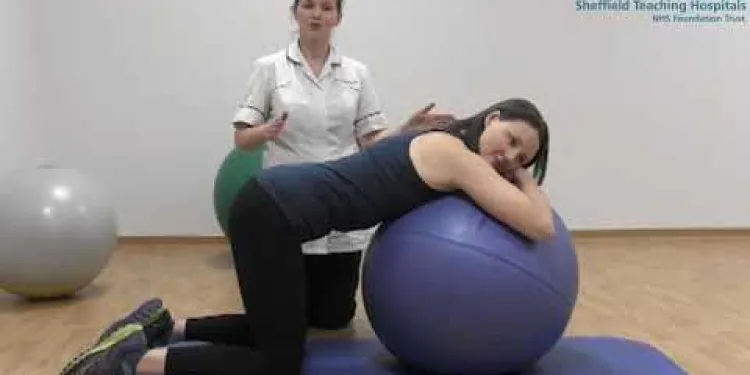
Mat and gym ball exercises with pregnancy related Pelvic Girdle Pain
Relevance: 57%
-

Pelvic health: stress urinary incontinence
Relevance: 56%
-

Pelvic health: Urge Incontinence
Relevance: 54%
-

Can exercises help with labor preparation?
Relevance: 48%
-

Incontinence and Prolapse - Physiotherapy Advice
Relevance: 44%
-

Incontinence and Prolapse - Physiotherapy Advice
Relevance: 43%
-

Pelvic Girdle Pain Advice Class
Relevance: 40%
-

Prolapse Types and Tips
Relevance: 39%
-

Physiotherapy Assessment of Urinary Incontinence
Relevance: 38%
-
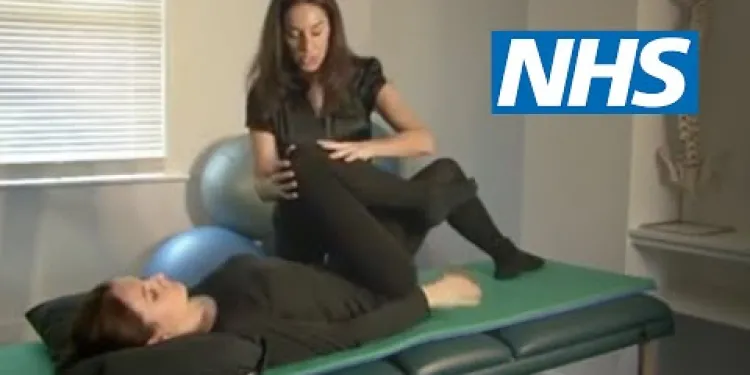
Exercises for sciatica: spinal stenosis | NHS
Relevance: 37%
-

What exercises can I do during pregnancy?
Relevance: 37%
-
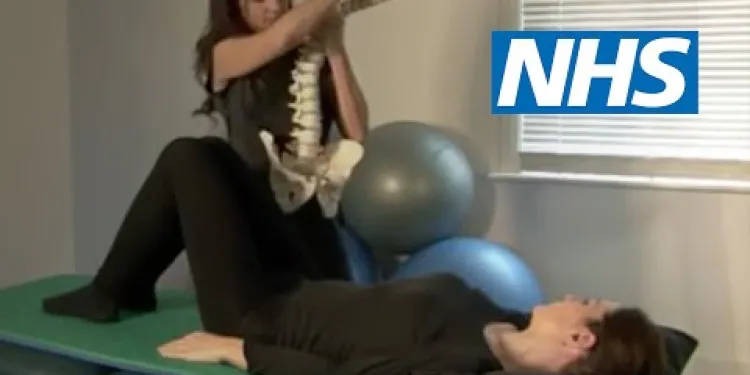
Exercises for sciatica: herniated or slipped disc | NHS
Relevance: 36%
-

Prolapse Management
Relevance: 36%
-

Newcastle Specialist Continence Service's Light Urinary Incontinence Project
Relevance: 34%
-

Incontinence | NHS
Relevance: 34%
-

BSL Pelvic inflammatory disease (PID)
Relevance: 33%
-

Can I do abdominal exercises during pregnancy?
Relevance: 33%
-
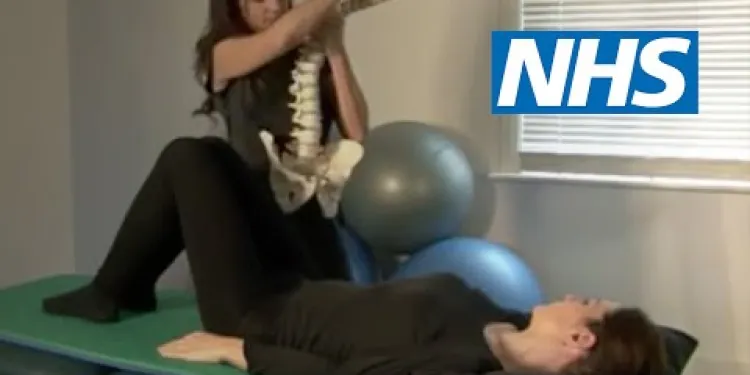
Exercises for sciatica: herniated or slipped disc | NHS
Relevance: 32%
-

Can I do high-impact exercises while pregnant?
Relevance: 32%
-

Can I take exercise classes during pregnancy?
Relevance: 31%
-

Understanding Your Sexual Health - Pelvic Inflammatory Disease
Relevance: 30%
-
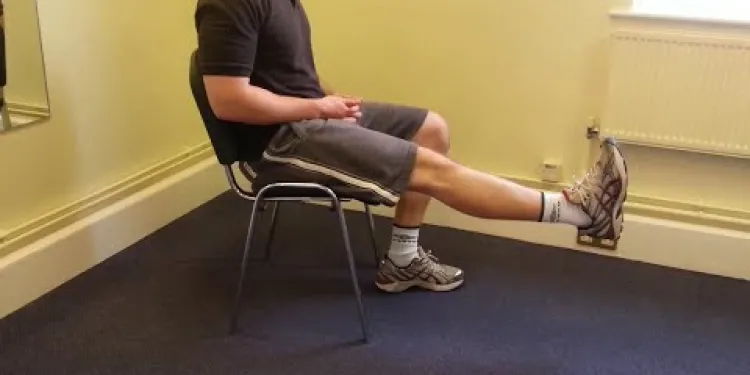
Knee Care Exercises
Relevance: 30%
-

Exercises for sciatica: degenerative disc disease | NHS
Relevance: 30%
-

ACL pre-operation exercises
Relevance: 30%
-
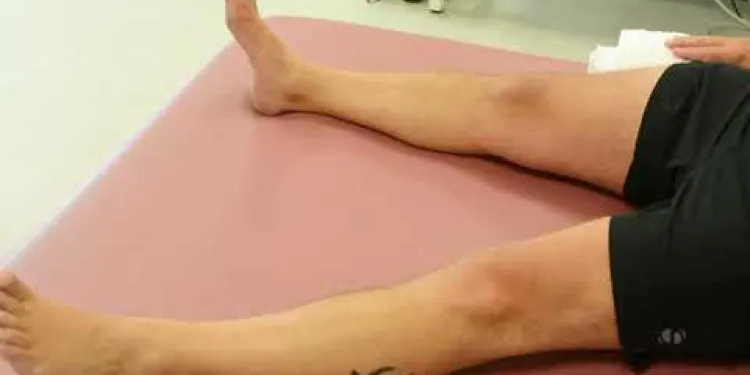
Joint School - Hip Exercises
Relevance: 29%
-

Neck Exercises
Relevance: 27%
-

Neck Exercises
Relevance: 26%
-

Shoulder Exercises 1
Relevance: 26%
-
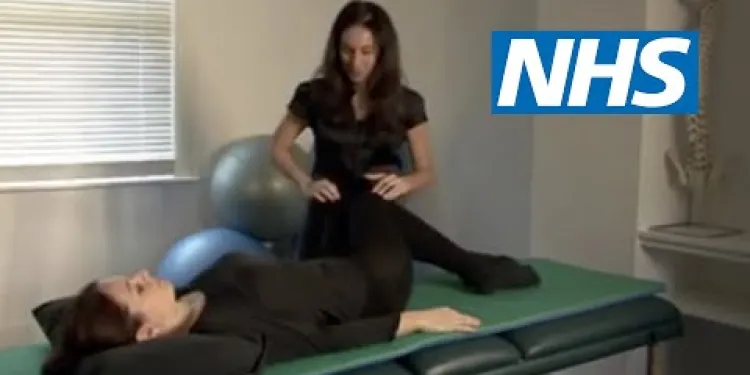
Exercises for sciatica: piriformis syndrome | NHS
Relevance: 26%
-
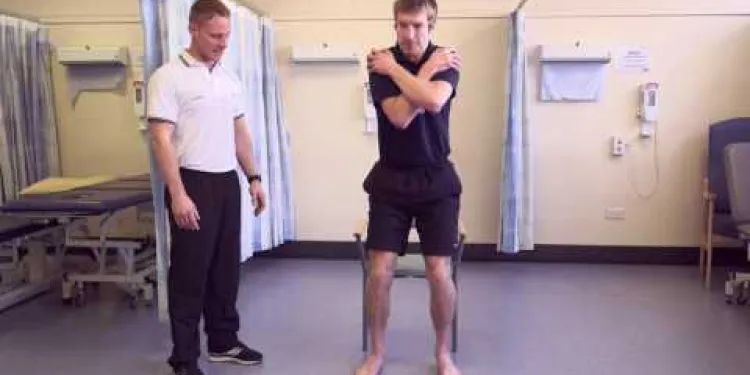
Exercises to help your lateral hip pain
Relevance: 26%
-
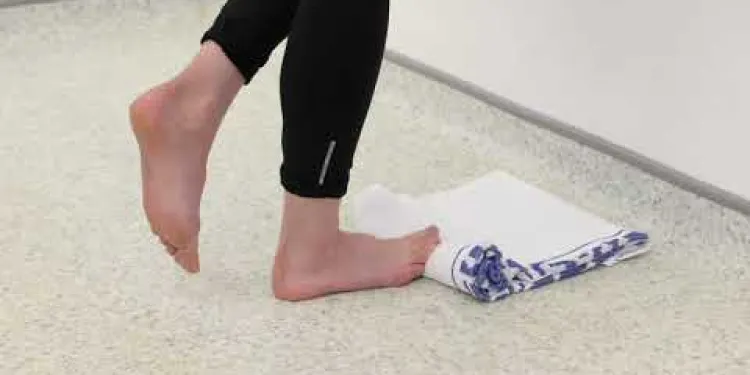
Plantar Fascia Loading Exercise (High Load Exercise)
Relevance: 26%
-

Facial exercise programme
Relevance: 25%
-

Exercise in patients with a neuropathy
Relevance: 25%
How to Do Pelvic Floor Exercises
The pelvic floor muscles play a crucial role in supporting the bladder, bowel, and uterus. Whether you are aiming to prevent incontinence, support the pelvic organs, or improve muscle tone post-pregnancy, pelvic floor exercises, also known as Kegel exercises, are essential. In this guide, we provide step-by-step instructions endorsed by the NHS, ensuring your exercises are done effectively and safely.
Identify Your Pelvic Floor Muscles
Before engaging in pelvic floor exercises, it's important to correctly identify the relevant muscles. To do this, try to stop the flow of urine when you’re halfway through peeing. This action isolates your pelvic floor muscles. However, avoid making this a routine practice as it can interfere with natural urination and cause potential bladder issues.
Basic Pelvic Floor Exercise Routine
Once you've located your pelvic floor muscles, you're ready to start exercising. Begin by sitting comfortably with your knees slightly apart. First, tighten the muscles as if you're stopping the flow of urine and hold for a slow count of five. Maintain normal breathing throughout and avoid engaging your abdomen, buttocks, or thighs during this. Release the muscles and give them a rest for five seconds. Aim to repeat this tightening and releasing approximately 10 times for a full set.
Consistency and Progression
For optimal results, it's important to practice pelvic floor exercises daily. Try to incorporate three sets of 10 repetitions throughout different parts of your day. As your strength builds, you can increase the duration of each hold up to 10 seconds. Consistency is key, and positive changes may take a few months to become evident.
Avoiding Common Mistakes
While doing pelvic floor exercises, many people unintentionally engage incorrect muscles. Ensure you're not tightening your stomach, buttocks, or thighs. Breathing naturally is essential as holding your breath can place undue pressure on the abdomen. For those uncertain, consider seeking guidance from a healthcare or physiotherapy professional.
Benefits and Precautions
Pelvic floor exercises offer numerous benefits including improved bladder and bowel control, enhanced recovery after childbirth, and increased sexual satisfaction. However, if you experience pain, discomfort, or worsening symptoms, consult your GP or a pelvic floor specialist. With dedication and proper technique, pelvic floor exercises are a powerful tool for long-term health.
How to Do Pelvic Floor Exercises
Your pelvic floor muscles help support your bladder, bowel, and uterus. Doing pelvic floor exercises, also called Kegel exercises, can prevent leaks, support these organs, and help after having a baby. This guide will show you how to do these exercises safely. They are approved by the NHS.
Find Your Pelvic Floor Muscles
To exercise these muscles, you first need to find them. Try stopping your pee in the middle when you go to the toilet. This shows you where your pelvic floor muscles are. Don’t do this all the time, as it can cause problems with your bladder.
Basic Pelvic Floor Exercise Routine
Now that you know where your muscles are, you can start exercising them. Sit comfortably with your knees a bit apart. Pretend you are stopping your pee, and squeeze the muscles. Hold for a count of five. Breathe normally and don’t squeeze your tummy, buttocks, or legs. Let go and rest for five seconds. Try to do this 10 times for a full exercise set.
Consistency and Progression
To make your muscles stronger, do these exercises every day. Do three sets of 10 squeezes at different times of the day. As you get stronger, try to hold the squeeze for up to 10 seconds. Keep practicing regularly. You may see positive changes in a few months.
Avoiding Common Mistakes
Some people squeeze the wrong muscles. Make sure not to tighten your tummy, buttocks, or legs. Keep breathing normally, as holding your breath puts pressure on your tummy. If you’re not sure, ask a doctor or physiotherapist for help.
Benefits and Precautions
Pelvic floor exercises help control your bladder and bowel, improve recovery after childbirth, and increase sexual enjoyment. If you feel pain or things get worse, talk to your doctor. With practice and proper technique, these exercises can improve your health over time.
Frequently Asked Questions
What are pelvic floor exercises?
Pelvic floor exercises, also known as Kegel exercises, involve contracting and relaxing the muscles of the pelvic floor to improve muscle tone, support pelvic organs, and prevent urinary incontinence.
Why are pelvic floor exercises important?
Pelvic floor exercises are important because they help strengthen the pelvic floor muscles, which support the bladder, bowel, and uterus. Strong pelvic muscles can help prevent incontinence, improve sexual health, and support recovery after childbirth or surgery.
How can I find my pelvic floor muscles?
To find your pelvic floor muscles, try to stop the flow of urine midstream when going to the toilet. The muscles you use to stop urination are your pelvic floor muscles. However, do not regularly practice stopping urine flow as an exercise.
How should I perform pelvic floor exercises?
To perform pelvic floor exercises, sit comfortably and imagine squeezing and lifting the muscles you would use to stop urinating. Hold this contraction for a few seconds, then relax and repeat several times.
How often should I do pelvic floor exercises?
It is recommended to perform pelvic floor exercises at least three times a day. Aim to work up to 10 contractions in a session.
Can men also benefit from pelvic floor exercises?
Yes, men can benefit from pelvic floor exercises. These exercises can help improve bladder control and reduce the risk of incontinence after prostate surgery.
Can pelvic floor exercises help with postnatal recovery?
Yes, pelvic floor exercises can aid postnatal recovery by strengthening muscles that may have been weakened during pregnancy and childbirth.
How long does it take to see results from pelvic floor exercises?
Improvements in muscle strength can be seen within 3 to 6 weeks if exercises are performed regularly. However, for some individuals, it may take a few months to notice a significant difference.
Can pelvic floor exercises prevent prolapse?
Regular pelvic floor exercises can help maintain muscle strength and may reduce the risk or severity of prolapse, but consult a healthcare provider for tailored advice.
Are there any risks associated with pelvic floor exercises?
Pelvic floor exercises are generally safe, but it's important not to overexercise the muscles, which could lead to muscle fatigue. If you experience discomfort, consult a healthcare professional.
What are some common signs of pelvic floor problems?
Common signs include urinary incontinence, difficulty controlling bowel movements, pelvic pain, and frequent urination. Consulting a healthcare professional can help diagnose and treat these issues.
Can I do pelvic floor exercises during pregnancy?
Yes, pelvic floor exercises are safe during pregnancy and can help strengthen the muscles in preparation for childbirth. However, always check with a midwife or healthcare provider.
Does age affect the need for pelvic floor exercises?
Pelvic floor strength can decline with age, so regular exercises can be beneficial for maintaining muscle support and preventing incontinence in older adults.
What are some tips for remembering to do pelvic floor exercises?
Incorporate exercises into your daily routine, like doing them while brushing your teeth, watching TV, or at mealtimes. Setting reminders on your phone can also help.
Are there professionals who can help with pelvic floor exercises?
Yes, physiotherapists specialising in women's or men's health can provide guidance on pelvic floor exercises and create a personalised exercise plan.
What are pelvic floor exercises?
Pelvic floor exercises are simple exercises. They make the muscles at the bottom of your tummy strong. These muscles help you do things like go to the toilet and hold pee in.
To do these exercises, you squeeze the muscles like you are trying to stop pee. Hold for a few seconds, then relax.
You can try squeezing and letting go a few times every day.
Some helpful tools can make it easier:
- Watch a video to see how to do it.
- Ask a friend or someone you trust to do it with you.
- Set a reminder to practice every day.
These exercises can help make your muscles strong and healthy.
Pelvic floor exercises are also called Kegel exercises. These help to make the muscles at the bottom of your tummy (pelvic area) stronger. Doing these exercises can help you with:
- Making your pelvic muscles stronger
- Supporting your insides (like your bladder)
- Stopping leaks when you go to the toilet
If you need help, you can:
- Ask a doctor or nurse to show you how
- Use videos or apps that show Kegel exercises
- Listen to audio guides that talk you through the steps
Why Do Pelvic Floor Exercises?
Pelvic floor exercises help make the muscles at the bottom of your tummy strong.
These exercises stop leaks when you laugh, cough, or sneeze. They also help you when you go to the toilet.
Doing these exercises is easy and safe. You can do them at home. A tool like a reminder app can help you remember to do them every day.
Doing exercises for your pelvic floor is good for you. These exercises make your pelvic floor muscles strong. These muscles help hold up your bladder, bowels, and uterus.
Strong pelvic muscles can help you stop leaks when you pee or poo. They can also make you feel better during sex. These muscles help you get better after having a baby or after an operation.
To make these exercises easier, you can use pictures or videos that show you how to do them. You can also ask a doctor or therapist to show you how.
How can I find my pelvic floor muscles?
Your pelvic floor muscles help hold your bladder and bowel. They stop pee and poo from coming out.
To find these muscles, try to stop peeing halfway. The muscles you use are your pelvic floor muscles. Do not do this all the time, just once to find the muscles.
You can also lie down and imagine you are trying not to pass gas (fart). The squeeze you feel is your pelvic floor muscles working.
If you need help, you can ask a doctor or nurse. They can show you how to do this. There are also apps that can guide you with exercises.
To find your pelvic floor muscles, do this:
When you are peeing, try to stop the pee in the middle. The muscles you use to stop peeing are your pelvic floor muscles.
But remember, don't stop your pee like this all the time. It should not be used as an exercise.
If you want to learn more about exercises for these muscles, you can ask a doctor or look for videos on the internet.
How can I do pelvic floor exercises?
To do pelvic floor exercises, sit in a comfy chair. Imagine squeezing the muscles you use to stop peeing. Hold the squeeze for a few seconds. Then relax and do it again a few times.
How often should I do pelvic floor exercises?
Pelvic floor exercises help your bladder and bowel. Try to do them every day. You can do them in the morning, afternoon, and night. This helps you get strong muscles.
Remember to breathe when you exercise. You can use an alarm or a reminder app to help you remember. Ask a friend or family member to remind you.
It is good to do pelvic floor exercises three times every day. Try to do 10 squeezes each time.
Is it good for men to do pelvic floor exercises?
Yes, men can do pelvic floor exercises. These exercises can help men control their bladder better. They can also help men after prostate surgery.
Can exercises for pelvic floor help after having a baby?
After having a baby, doing special exercises can help your body get better. These exercises are for the pelvic floor. The pelvic floor is a group of muscles at the bottom of your tummy. They help when you go to the toilet and keep everything inside your tummy. When you are pregnant and have a baby, these muscles can get weak. Doing exercises can make them strong again.
Here are ways to help you do the exercises:
- Ask a doctor or nurse to show you how to do the exercises.
- Use a timer to remind you to do the exercises every day.
- Try doing them when you brush your teeth or watch TV.
It's important to be patient. It might take some time to feel better, but doing the exercises can really help. If you need help, ask a doctor, nurse, or someone you trust.
Yes, you can do exercises to make your pelvic floor muscles strong again after having a baby. These exercises help your muscles get better if they got weak when you were pregnant or when the baby was born.
When will I see changes from pelvic floor exercises?
Doing pelvic floor exercises can help you. It might take a few weeks to notice changes. Keep doing them every day.
Tools that might help:
- Use a reminder on your phone to remember to do your exercises.
- Ask a friend or family member to help remind you.
- Watch a video to see how to do the exercises right.
You can get stronger muscles in 3 to 6 weeks if you exercise regularly. But for some people, it might take a few months to see a big change.
Can exercises help keep the pelvic floor strong?
You can make the muscles in your lower belly strong by doing special exercises. These muscles hold up important body parts.
Doing these exercises can help stop things from moving down where they shouldn't. This is called a prolapse.
Try to do exercises like squeezing the muscles when you pee, but not when you really need to go. This can make your muscles stronger.
If you are not sure how to do these, you can ask a doctor or nurse. They can help you learn the right way.
Using videos or apps on your phone can also help you practice these exercises.
Doing pelvic floor exercises can make your muscles strong. This might help stop problems or make them less serious. But it's a good idea to talk to a doctor for advice that is just for you.
Can pelvic floor exercises be harmful?
Doing pelvic floor exercises is generally safe, but there are a few things to keep in mind:
- If you do them too much, your muscles might get tired.
- Make sure you are doing the exercises in the right way.
- If you feel any pain, stop and talk to a doctor.
If you need help, try asking a doctor or using a guide to learn how to do the exercises correctly.
Pelvic floor exercises are usually safe. But don't do them too much. If you use the muscles too much, they can get tired. If you feel any pain or soreness, talk to a doctor or nurse.
What are some signs of pelvic floor problems?
Here are some signs you might have a problem with your pelvic floor:
- You often need to pee.
- You leak pee when you cough or laugh.
- It hurts when you pee.
- You have a hard time going to the toilet for poop.
- You feel pain in your lower tummy or back.
If you think you have any of these signs, talk to a doctor. They can help you. You can also do exercises to make your pelvic floor stronger. Ask a doctor for advice.
Common signs are problems like wetting your pants, trouble going to the bathroom, tummy pain, and needing to pee a lot. Talk to a doctor or nurse. They can help find out what is wrong and make you feel better.
Can I do pelvic floor exercises when I am pregnant?
Yes, you can do pelvic floor exercises when you are pregnant. These exercises are good for you and your baby.
Pelvic floor exercises keep your muscles strong. This helps when you have your baby and after.
If you need help, ask a doctor or nurse. They can show you how to do the exercises.
You can also find videos and apps to help you practice.
Yes, doing pelvic floor exercises is safe when you are pregnant. These exercises can make your muscles stronger and help get ready for having a baby. But, always talk to your midwife or doctor first.
Do older people need to do pelvic floor exercises?
As we get older, the muscles that support our pelvis might not be as strong. Doing special exercises regularly can help keep these muscles strong. Strong pelvic muscles can help stop problems like peeing when you don't mean to.
How can I remember to do pelvic floor exercises?
Add exercises to your daily routine. You can do them while brushing your teeth, watching TV, or during meals. Setting reminders on your phone can help you remember.
Can people help with pelvic floor exercises?
Yes, there are people who can help you. You can talk to a doctor or a physical therapist. They can show you how to do the exercises. You can also use apps or watch videos online to learn more.
Yes, special doctors called physiotherapists can help. They know a lot about women's and men's health. They can show you exercises for your pelvic floor. They can also make a special exercise plan just for you.
Useful Links
- Ergsy carfully checks the information in the videos we provide here.
- Videos shown by Youtube after a video has completed, have NOT been reviewed by ERGSY.
- To view, click the arrow in centre of video.
- Most of the videos you find here will have subtitles and/or closed captions available.
- You may need to turn these on, and choose your preferred language.
- Go to the video you'd like to watch.
- If closed captions (CC) are available, settings will be visible on the bottom right of the video player.
- To turn on Captions, click settings .
- To turn off Captions, click settings again.
More Items From Ergsy search
-

How to do pelvic floor exercises | NHS
Relevance: 100%
-

Pelvic Floor Exercises - Using Your Pelvic Floor to Calm Down Your Bladder
Relevance: 98%
-

Pelvic Floor Exercises - Using Your Pelvic Floor to Calm Down Your Bladder
Relevance: 97%
-

The Pelvic Floor Muscles - Developing an Exercise Programme
Relevance: 96%
-

Pelvic health: prolapse
Relevance: 64%
-

Pelvic health: prolapse
Relevance: 61%
-

Your pelvic health matters: insights from NHS clinicians
Relevance: 58%
-

Mat and gym ball exercises with pregnancy related Pelvic Girdle Pain
Relevance: 57%
-

Pelvic health: stress urinary incontinence
Relevance: 56%
-

Pelvic health: Urge Incontinence
Relevance: 54%
-

Can exercises help with labor preparation?
Relevance: 48%
-

Incontinence and Prolapse - Physiotherapy Advice
Relevance: 44%
-

Incontinence and Prolapse - Physiotherapy Advice
Relevance: 43%
-

Pelvic Girdle Pain Advice Class
Relevance: 40%
-

Prolapse Types and Tips
Relevance: 39%
-

Physiotherapy Assessment of Urinary Incontinence
Relevance: 38%
-

Exercises for sciatica: spinal stenosis | NHS
Relevance: 37%
-

What exercises can I do during pregnancy?
Relevance: 37%
-

Exercises for sciatica: herniated or slipped disc | NHS
Relevance: 36%
-

Prolapse Management
Relevance: 36%
-

Newcastle Specialist Continence Service's Light Urinary Incontinence Project
Relevance: 34%
-

Incontinence | NHS
Relevance: 34%
-

BSL Pelvic inflammatory disease (PID)
Relevance: 33%
-

Can I do abdominal exercises during pregnancy?
Relevance: 33%
-

Exercises for sciatica: herniated or slipped disc | NHS
Relevance: 32%
-

Can I do high-impact exercises while pregnant?
Relevance: 32%
-

Can I take exercise classes during pregnancy?
Relevance: 31%
-

Understanding Your Sexual Health - Pelvic Inflammatory Disease
Relevance: 30%
-

Knee Care Exercises
Relevance: 30%
-

Exercises for sciatica: degenerative disc disease | NHS
Relevance: 30%
-

ACL pre-operation exercises
Relevance: 30%
-

Joint School - Hip Exercises
Relevance: 29%
-

Neck Exercises
Relevance: 27%
-

Neck Exercises
Relevance: 26%
-

Shoulder Exercises 1
Relevance: 26%
-

Exercises for sciatica: piriformis syndrome | NHS
Relevance: 26%
-

Exercises to help your lateral hip pain
Relevance: 26%
-

Plantar Fascia Loading Exercise (High Load Exercise)
Relevance: 26%
-

Facial exercise programme
Relevance: 25%
-

Exercise in patients with a neuropathy
Relevance: 25%


